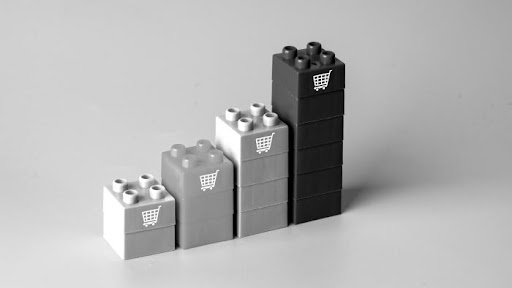Dhe young Johann Wolfgang von Goethe visited the Dresden Picture Gallery in 1768. In “Poetry and Truth” he later wrote enthusiastically about the paintings of Gottfried Schalcken, who worked in The Hague. His night pieces made such an impression on him that, back in the guest room, he perceived the interior as a picture of the Dutchman: “. . . a lamp illuminated the cramped situation, where my increasingly practiced eye immediately saw the most beautiful picture of Schalcken, from which I could not tear myself away, so that it drove all sleep away from me.” A similar thing happens in the themed exhibition “Breathing”, where the painting “Young Man Blowing on a Torch to Light a Candle” (1692-1696) presages the blackouts to come, should they come.
Candles have long been in short supply in Kyiv. In this country, it is still an affordable good, even if it is becoming increasingly rare to find it on supermarket shelves. Before electrification, they were known to be a luxury that was disproportionately reflected in depictions in paintings. Back then, you had to get up close to see the blurring of contours or the emergence of reflection effects after dark. You do that despite the daylight, also in view of the puffed-out cheeks of the boy who supplies the flame with oxygen. And then there’s the woman in the shadows. She looks at the other person curiously, as if she could start the witty conversation of a salonnière at any moment were it not for the danger that the boy would run out of breath and the tête-à-tête would suddenly come to an end.

Homo bulla: “Boy Blowing Soap” by a Dutch master, c. 1740-1760.
:
Image: Staedel Museum
Soap bubbles and smoke in the baroque
Half a century earlier, the Utrecht Caravaggist Hendrick ter Brugghen painted two boy portraits. One plays the block whistle. The other, standing with his back to the viewer, fife. This Dutchman is also fascinated by the power of breath, by the creativity it promotes. No sounds, no speech without inhaling and exhaling. And no death either. Which is why his contemporaries could not get enough of vanitas motifs, as further paintings prove: skulls, withering flowers, tobacco smoke dissipating in the air. As orchestrally coherent as the Old Masters are combined with other epochs and media by the curators Brigitte Kölle and Sandra Pisot, atmospherically flanked by aerodynamic white wall paint, the course through several parts of the building increasingly results in an overall picture pointing towards the present – including references to violent death by suffocation one George Floyd.
Around 45 positions are in a cross-time dialogue. Soap bubbles are already falling from the ceiling in the foyer. As soon as they hit the ground, they breathe their last. One might think that the installation “En el Air” by the Mexican Teresa Margolles is playful. The opposite is the case. The forensic assistant and artist prefers materials that have come into contact with the dead. In Mexico City, with its drug war, you don’t have to look far. She used water to make the bubbles from soaked fabrics found at violent crime scenes.

Few places need air so badly: Thomson & Craighead’s 2009 video “Several Interruptions”.
:
Image: Thomson & Craighead
The impermanence that can be touched should therefore be understood as a guide to perseverance, because the air of life or the pneuma, anime or spirit, are now more threatened than ever. In times when the face mask impairs breathing, does not the inspiration that the baroque valued so much in the mobile air molecules suffer? And once the virus has been tamed, isn’t there still a risk of shortness of breath from toxic air pollutants that no vaccine can get rid of so quickly? Haven’t we long been caught up in Hamlet’s ecological-pandemic “Night’s spawning season / Where tombs yawn, and hell itself / Plague breathes into this world”? Life seems to be getting back to normal, but that doesn’t mean the spook is over. For the Austrian painter Markus Schinwald, the outbreak of Covid-19 was only the confirmation of his darkest hunches.
Already in 2017 he portrayed mask wearers who had fallen out of time. What the finely crocheted lace, glass balls and strange facial prostheses were supposed to protect these air phobics from avant la lettre remains unclear. Schinwald acquired the models from the nineteenth century at auctions and in antique shops and, with the added accessories, distanced them from the here and now, as if these revenants wanted to tell us: This future is not to be trusted! This also applies to the nine metal mirrors by Oscar Muñoz, which one approaches with suspicion. Instead of a self-portrait, one’s own breath conjures up people who have become victims of political violence in Colombia. Lucinda Devlin even ventures into American gas chambers with her camera and captures the horror of the death penalty from the voyeuristic perspective of the audience gallery.
The research agency Forensic Architecture, which is active in the art context, is not stingy with time references in its work “Cloud Studies”. It focuses on forms of warfare that are staged in the air. The fact that herbicides, tear gas or phosphorus are difficult to detect makes them the perfect weapon, since they are invisible and silent. Nevertheless, forensic architecture transforms their chemical structures into cloud formations, and lo and behold, one stands in the middle of the long tradition of cloud images, represented in the show by Caspar David Friedrich, for example. A trump card that finally makes breathing easier again.
To breathe. Hamburg art gallery; until January 15, 2023. The catalog costs 44 euros.















